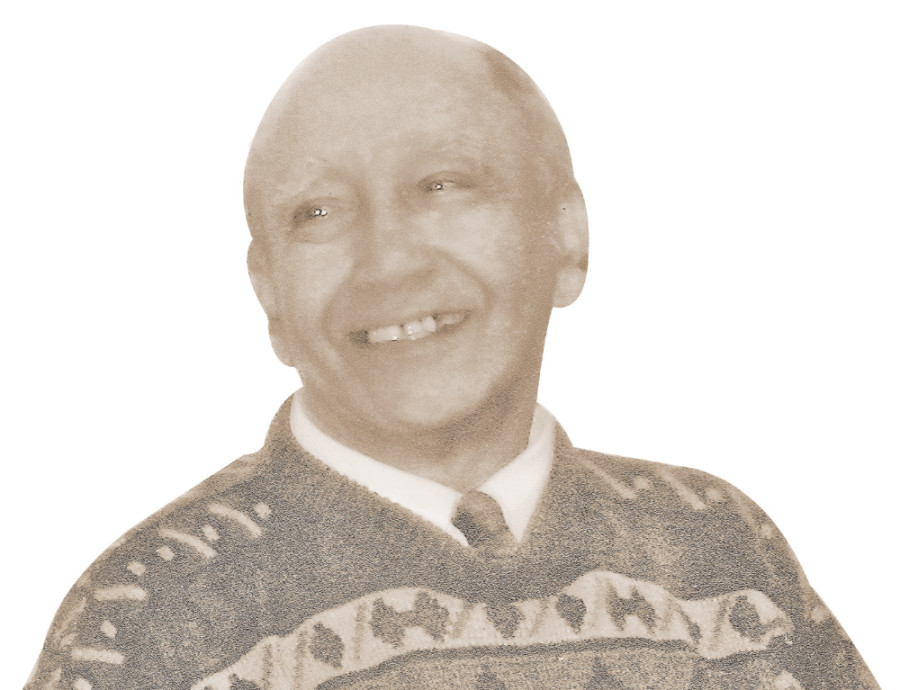Miscellaneous
Service above all else
Dr Moin Shah was a firm believer in community-based medical education and urged doctors to come out and serve the society they practiced in
Manish Gautam
Dr Moin Shah, founding dean of the Institute of Medicine, who, despite seemingly insurmountable odds, spearheaded undergraduate medical education in the country, passed away on July 25. A visionary leader who strongly believed in exposing young students to community service, Dr Shah died after his health rapidly deteriorated from an unknown complication. He was 82.
Dr Shah is remembered for his invaluable contribution to the development of medical education in the country. A staunch believer of community-oriented medical education, Dr Shah’s approach has gained particular prominence as the country debates over the sub-par quality of medical graduates and the ever mushrooming medical colleges around the country.
Until 1972 there were no medical schools in Nepal, with aspiring doctors having to pursue their studies in India and beyond. That year, the Institute of Medicine (IoM) under the Tribhuvan University, heralded a new dawn for medical education, allowing students to train as health professionals at home. Dr Shah upon his appointment as the dean immediately initiated courses for Auxiliary Nurse Midwives and Community Medical Assistants. Six years later, in 1978, he admitted 22 students as the first batch of MBBS students at the IoM. It was far from smooth sailing; a small hospital and a limited number of faculty members meant that many of his detractors questioned whether such an undertaking was even feasible. Yet, some forty years later, the foundations that Dr Shah laid during his tenure have withstood the test of time and IoM has transformed itself into a centre of excellence, sought after by students from Nepal and abroad alike.
In his book, Nepal’s Quest for Health, Dr Hemang Dixit, who succeeded Dr Shah as the dean at IoM, writes, “When the MBBS course at the Institute of Medicine started in 1978, there was a great deal of opposition.” He also states that people believed what Dr Shah had envisaged for Nepal was impractical, non-traditional and shunned by the world at large. “What has happened instead is that the concepts that were then advocated—community medicine, problem solving, systematic instruction and integrated teaching—have now been widely accepted the world over.”
An avid reader who maintained sound understanding of the trends in global medical education, Dr Shah and his team conducted surveys at health facilities in Bara, Nuwakot, Dhankuta and Surkhet to understand disease patterns and the core health needs of the society. These findings were eventually incorporated into the curriculum developed by the IoM.
“He hired professionals from the World Health Organisation to develop the curriculum for the MBBS courses that would be offered at the IoM. But Dr Shah would always contextualise the courses. He strongly believed that doctors need to look beyond the hospital and observe what the needs were in particular community that they were serving in,”remembers Dr Dixit.
Dr Dixit credits Dr Shah for ensuring that the medical education in Nepal was soundly based on tenants of community service and collaboration. According to him, at the time IoM had come up with a modality that only allowed community-level health workers—health assistants, lab assistants and others—to enrol into its MBBS courses.
Dr Shah was born into a merchant family in Chettrapati, Kathmandu. A diligent student from the onset, he secured the top honours in the School Leaving Certificate—the coveted Board First—in 1949, before pursuing his higher education at Tri-Chandra College in the Capital. Upon completion, he enrolled at the Osmania Medical College in Hyderabad and returned to Nepal in 1958 with an MBBS degree. Dr Shah would also go on to be a fellow at the Royal College of Surgeons in London, Glasgow and then Edinburgh, all revered medical institutions that specialise in surgery.
His contemporaries at medical school remember him as an extremely sharp student who left a lasting impression on the faculty members and students alike. Dr Madan Upadhyay, the founding vice-chancellor of the BP Koirala Institute of Health Sciences, joined Osmania Medical College two years after Dr Shah graduated, and says he was fondly remembered by many. “I think he was the first Nepali MBBS graduate from the college, and he was remembered on campus even though he had already graduated,” Dr Upadhyay says.
During his year of clinical studies in 1955, Dr Shah would visit his friends who were posted in rural districts of Andhra Pradesh in India. “Our training was based on the undergraduate curricula of Cambridge and Harvard but my friends had to practise under deplorable conditions,” Dr Shah wrote in Kathmandu University Medical Journal, 2009. The situation was no different in Nepal. An article, titled Bringing Health to the Himalayas,written by Joseph Hanion in June 1978, describes that half the babies born in Nepal at the time died before the age of five, while only six percent of the population had access to clean drinking water. “There are now 356 doctors, compared with 12 in 1956. But until this year, all doctors had to go to India for training, and less than one-third returned to Nepal,” Hanion wrote in the New Scientist magazine.
Far ahead of his contemporaries, Dr Shah continually fought to have these important facets taken into account as the country moved to institutionalise medical education.
Yet, for all his contributions, Dr Shah’s foresight would go largely unheeded.
If he had been universally lauded while dean at IoM; after serving his term, the visionary leader and peerless surgeon, would go on to be ostracised by the very institute that he helped found. “He was bypassed by his colleagues at the IoM because he had unshakeable morals and work ethics, which made him hard to work with,” says Dr Arjun Karki, former vice-chancellor at the Patan Academy of Health Sciences, “he was eventually forced to move to Saudi Arabia in 1981 in order to be able to continue plying his trade.”
Even when in Saudi Arabia, Dr Shah retained a keen interest in Nepal’s medical education. “Dr Shah returned from Saudi Arabia to apply for a vacant position in the IoM faculty. He waited for over nine months for the results to be published,” says Dr Karki. But to no avail.
One of Dr Shah’s first students at the IoM, Dr Baburam Marasini, now the director of Epidemiology and Disease Control Division, says his mentor had even offered to teach without pay. Even that request was inexplicably declined. Despairing and frustrated, Dr Shah would once again depart for Saudi Arabia, returning to Nepal only in 2006.
A quiet and reserved man, Dr Shah never sought to hog the lime lights in his lifetime, instead choosing to tirelessly contribute what he could, from where he could. “He never wanted any attention, that is perhaps why not too many people outside the medical community know of him,” says Dr Karki, “but he was a true pioneer. He helped shape Nepal’s medical sector and we can only wonder what he would have helped accomplish had he been allowed to fully implement his visions.”




 17.12°C Kathmandu
17.12°C Kathmandu










